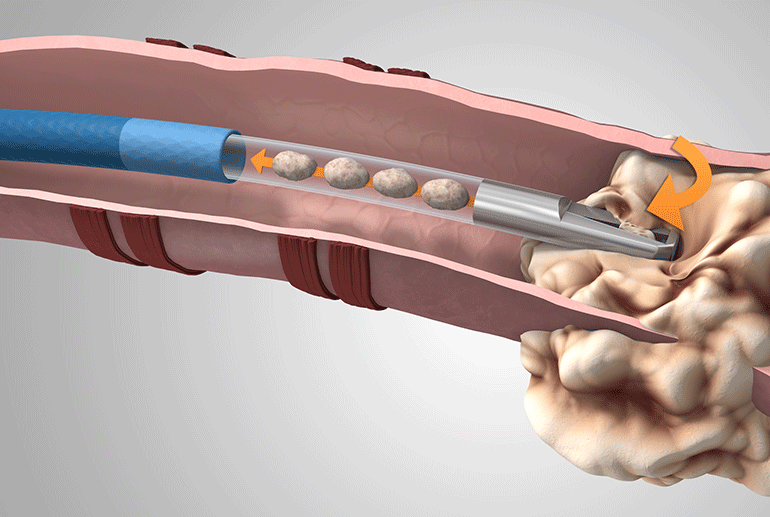Cancer biopsy is a medical procedure that involves removing a small amount of tissue or fluid from the body for examination to determine if cancer cells are present or not. The biopsy procedure plays a crucial role in cancer diagnosis and treatment planning.
What is a Biopsy?
A biopsy is a minor surgical procedure where doctors remove a small amount of tissue from the body for further examination under a microscope. There are different types of biopsies depending on the area or organ from where the tissue is taken. Some common biopsy methods include surgical biopsy, needle biopsy, endoscopic biopsy etc. The goal of the biopsy is to accurately diagnose cancer and determine how far it has spread in the body.
Types of Biopsies
There are various biopsy types based on the location and method of obtaining the tissue sample:
– Surgical biopsy: Involves making an incision in the skin to remove tissue using a scalpel. It is more invasive but allows collection of larger tissue samples.
– Needle biopsy: Involves using thin hollow needles of varying sizes to extract tissue samples without making incisions. Common types are fine needle aspiration biopsy and core needle biopsy.
– Endoscopic biopsy: Uses an endoscope (thin flexible tube with a camera) inserted through natural openings to guide biopsy forceps. Examples are bronchial biopsy and gastrointestinal biopsy.
– Image-guided biopsy: Uses imaging scans like ultrasound, MRI or CT to guide the biopsy needle placement for precise tissue collection.
The doctor selects the biopsy type based on the cancer location, availability of tissue for sampling and accuracy required for diagnosis.
Preparing for the Biopsy
Proper preparation is important for a successful biopsy. The doctor’s office will provide instructions regarding fasting, medications to stop etc prior to the procedure. On the scheduled date, written consent will be obtained after explaining the risks, benefits and procedure details to the patient. Depending on the biopsy type, either local anesthesia or conscious sedation may be used during the procedure. Pre-biopsy blood tests may be advised in certain cases.
Importance of Biopsy Findings
The tissue samples collected during biopsy are sent to a pathology laboratory for microscopic analysis. The pathologist looks for cancer cells and their characteristics like appearance, growth pattern and aggressiveness. Based on the findings, important decisions can be made regarding the cancer diagnosis, type and stage. This helps determine the appropriate treatment plan whether it involves surgery, chemotherapy, radiation therapy or other interventions. Biopsy also rules out malignancy if cancer cells are not detected, providing diagnostic closure for patients.
Risks and Complications of Biopsy
While biopsy is usually a low risk procedure, there are some potential complications to be aware of:
– Bleeding or bruising at biopsy site which is usually minor and stops on its own.
– Infection at biopsy site which is rare with proper sterile techniques during procedure.
– Inaccurate sample collection leading to false negative diagnosis if cancerous area is missed.
– Organ damage or puncture while taking lung, liver or kidney biopsies.
Doctors are highly skilled and take necessary precautions to minimize risks. Immediate medical attention should be sought if excessive bleeding, severe pain or fever develops after biopsy.
Importance of Patient Education
It is crucial for patients undergoing biopsy to understand the rationale, procedure details, possible findings as well as post-biopsy care instructions. This empower patients to make informed decisions and cooperate fully during the procedure. They should clarify all doubts with their doctors and seek support from family members. Following doctors advice will help get accurate results while reducing potential risks of biopsy. With correct preparation and post-care, biopsy remains a safe and important diagnostic test in cancer care.
Cancer Biopsy serves as a gateway investigation in cancer diagnosis and management. By providing tissue samples for pathological examination, it helps identify malignancy with certainty and stage the extent of disease spread. While carrying some procedural risks, modern biopsy techniques under medical guidance enables safe tissue collection. The biopsy results guide all further treatment decisions, making it a crucial diagnostic step in the battle against cancer. With proper patient education and cooperation, biopsies continue playing a pivotal role in defeating cancer.
*Note:
1. Source: Coherent Market Insights, Public sources, Desk research
2. We have leveraged AI tools to mine information and compile it

